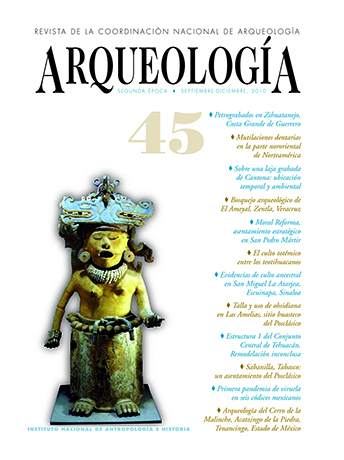Dental mutilations in the northeastern of North America
Keywords:
osteological material, filing teeth, EUA-Illinois-Texas-Arizona-Nuevo México, México-Nuevo Leó, Middle Preclassic or Formative (900-600 B.C.E.)Abstract
Osteological material related to the archaeology of the American continent displays a long cultural tradition of filing teeth that has focused on Mesoamerican finds, but this tradition also extended into the northeastern part of North America. Isolated pockets in this part of the continent have certain universal characteristics in filing techniques that in some cases displayed regional refinement. The data presented here come from the Middle Mississippi area, mainly from the state of Illinois, as well as from isolated finds scattered in Texas, Arizona, New Mexico, and Nuevo León in Mexico. The patterns observed in all these areas were mostly simple filing of tooth edges, patterns that have their origin in the Middle Preclassic or Formative in Tlatilco, 900–600 BC. The more elaborate work in this section of North America was in the Cahokia area.



